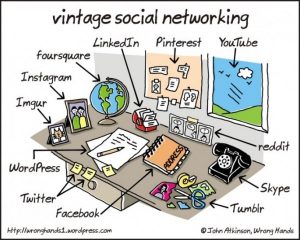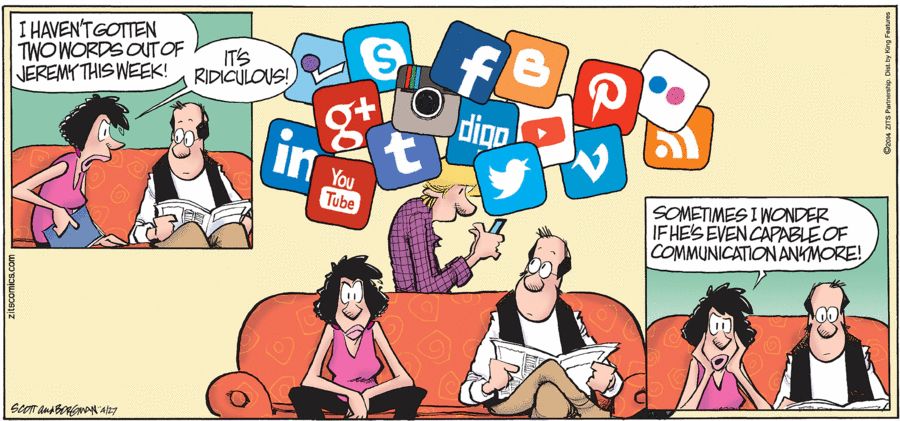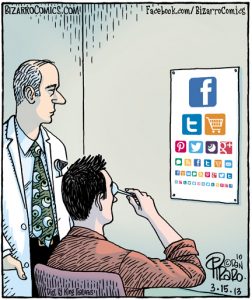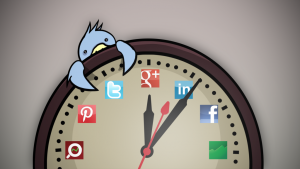
It’s Sunday afternoon and the library is filled to the brim with students. I could barely find a seat, but there was one lone seat next to a friend of mine. I would prefer to sit alone and seclude myself so I can finish my work in a timely manner, but there aren’t many options for that on campus right now. All around me, students are on their phones, typing away on their laptops, or talking with friends. Some, of course, are actually doing their work, but often the library becomes a social place rather than one for study and quiet. After about four hours of hard work with minimal distraction, I start to lose focus. My attention is constantly dragged back to my phone or to my friend next to me.
Finding a perfect working environment is hard for me and two other Lafayette students that I interviewed. Especially on a Sunday, you are most likely going to be surrounded by friends who are also trying to do work. Depending on deadlines and time restrictions, the importance of avoiding heavy distractions can fluctuate. Four hours is a long time for me to keep general focus, so as expected, there were a few minor distractions that occurred within that time.
One student I interviewed expressed strong concerns about her multitasking, the other student described his benefits from multitasking. The concerns from my personal experience and from the interview were mainly about technological distractions. However, in my research I found self-inflicted and social distractions as well. Although I can only make conclusions from three people, it seems that multitasking and distractions are being cultivated and maybe encouraged due to the lack of attention spans.
Preliminary Readings
As I sat in the library, I was surrounded by distractions and temptation to ditch my work for my phone. Even if my attention span can be an issue for getting work done sometimes, there are times when I can will myself to stay on task. An interesting article by Nicholas Carr called “Is Google Making Us Stupid?” attacks multitasking and technology as destructive to our brains. Although it is from 2008, the material is still relevant to looking at the internet’s impact on attention. Carr makes a point that the internet provides “immediate access to such an incredibly rich store of information.” However, he describes this plethora of information as a distraction to stay on topic.
Carr argues that society often resorts to “skimming” the web as a way absorb lots of information. However, he fails to address the benefits of having such information at our fingertips. Especially after coming to college, I appreciate the internet more than ever for it’s ability to assist me in my school work. With Carr’s ideas on how the internet is affecting our attention spans, we can try to shed light on issues with social media platforms as well. In the interviews, the students agreed that social media is a highly accessible resource to stay connected to people and to current events, and that it provides big distractors for them. So, could a negative impact from this ease be that if we rely too strongly on these forms of technology, we potentially lose some ability to stay focused and keep our attention on the task at hand?

The ways that distractions can be disrupting and distributing our attention is addressed by Jones and Hafner in their book, “Understanding Digital Literacies.” They attempt to address the reasons behind distractions and why they occur. An important part of their research looks at multitasking and how it prohibits one from giving their full attention to the tasks. Unlike Carr, Jones and Hafner also discuss how multitasking could be productive, like I found to be the opinion of one student. They discuss the economy of attention, where companies like Instagram and GroupMe find ways to purposely make their apps almost addicting. This proved to be a problem for one student who finds it hard to put away her phone while working.
From Jones and Hafner, I wonder if successful multitasking or productive distractions could be a way to maintain attention. An example of a productive distraction could be like when I was in the library and started to feel myself lose focus, I would check my phone quickly then return to work. Before I had a phone, or like my interviewee pointed out, a productive distraction used to be walking to the water fountain, or having a quick chat with a nearby friend.
In my research, there seems to be this change in the air from a coffee break to a phone break. If this is true for most of society, why should we care? A dramatic explanation for “why,” is Maggie Jackson’s book “Distracted: The Erosion of Attention and the Coming Dark Age.” She pushes and pulls at a idea of “eroding our capacity for deep, sustained, perceptive attention” due to developing technologies (13). Interesting as this seems, this doesn’t mean it is true for all of society. She makes biased assumptions of the future by disregarding the benefits that these distractions could offer.
For one student, the distraction and use of multitasking by doodling in class seems to benefit his ability to learn. However, this doodling developed due to the lack of attention during a lecture. Our ability to stay focused, to learn and understand, and to develop could soon become shaped by our distractions. The idea that social media and the internet will pull our society into this “dark age” is too one-sided for my research, yet an interesting contrast to how distractions could be beneficial.
Methodology and Discoveries
I conducted research of the attention abilities of college students by interviewing two current Lafayette students. I also kept a personal time journal while reading Carr’s article and a chapter from Jones and Hafner’s book. The information I gained from this research is essential to helping me understand patterns of attention and distraction. The time journal made me self aware of how and when I was completing my work, as well as showing me the distractors that I often face. Personally, face to face social interactions were the biggest issue for staying focused. I find that college surrounds me with lots of friends, which creates opportunities to become distracted. The circumstances for the time journal were a little different than normal since I only had time to read the article while in my sorority house surrounded by chatting girls. Normally, I would prefer to read in my room, but time didn’t allow for that. However, it is important to delve into these extreme situations since they can often happen.
The two interviews allowed me to dig into the minds of college students, which brought out some ideas they hadn’t thought about. In my first interview, Brian was reluctant to provide information about his attention span. After a few questions and some discussion, he provided interesting information about his work habits. The part of his interview that was most appealing to my research was his necessity to doodle in class. Outside of class, Brain finds he has a flexible schedule and often gets distracted by social media.
For Brian, these are essential details to concluding that his multitasking could be more beneficial than detrimental, yet his distractions could be setting him back. In my second interview, April was slightly more aware of her distractions and losses from her often disrupted attention span, yet wasn’t worried about its effects. The main problem she admitted to facing is the struggle to stay connected through social media while still being present in the moment, especially in college life.

Everyone seems to have their own forms of and reasons for multitasking. Personally, while reading and keeping my time journal, I found myself trying to multitask. Surrounded by my friends, I was trying to juggle being social and doing work by reading the article on my phone. This technique proved inefficient because I constantly had to reread paragraphs since most of my attention was being devoted to listening to the conversation around me.
In my interview with April, she guiltily considered herself as an “addictive multitasker.” For example, she tries to multitask by engaging in a texting conversation while working on an assignment. Although possible for some, this is an unsuccessful use of April’s time because her attention can’t fully be on her work. This starts by her conscious decision to leave her phone on the desk next to her work, a “self inflicted” distraction, as she would describe it. This is similar to what Carr was arguing about multitasking and the use of technology as distractors.
Unlike for April and according to Carr, multitasking might just work for some people. Brian’s doodling while listening to a lecture, a form of multitasking, makes him believe himself to be “a multitasker in the best way.” Brian described his doodling as “focusing attention elsewhere” to “open the mind and absorb information more effortlessly.” However, he knows it was a type of multitasking formed to “cope with fact that we as people have become more and more distracted.” Brian has potentially found a way to use multitasking to his advantage. If it is true that technology is shorting and damaging our attention, it could be beneficial for Brian to use doodling as an outlet to keep him focused on what is important.
A common distraction that I found in the interviews and in my personal experience is the use of group messaging systems. Almost every group, organization, club, or friends use apps such as GroupMe to create group chats. The attractive features are that it doesn’t matter if you have an iPhone or Android, which was once an issue with group chats, and you can turn off notifications for the app. However, April said that depending on the group, it is rare to silence it because she might miss an important message or question. April discussed the distraction of group messages while trying to work, coming to her conclusion that the problem is the constant “chain of responses.” She described to me how her phone lights up almost every 30 seconds with a GroupMe notification.
This is also an issue for me because I am in several GroupMe conversations. These platforms nurture quick and constant responses, which can create a desire to know what people are talking about or to be involved in the conversation. Most notifications are questions or updates on plans, which April said can lead her to discuss or think about those plans instead of continuing to work. College life can be busy but group messaging is a way to stay connected to several people and groups at once. All sorts of textual distractions arise when working with a phone or computer in reach. iMessaging works on Mac laptops so even when you put away your phone, you can still text. Technology surrounds us in more ways than we seem to understand.

Access to this unlimited stream of wifi and cellphones becomes increasingly more popular when transitioning into college life after high school. Between Brian and April, there is a common trend in work habits from high school to college, mainly the drastic difference in time management. When coming to college, classes are shorter than high school days, allowing for a more flexible schedule. April says in high school she worked hard but generally knew how to do all her work. Now, she needs to spend more time and get more help, like attending office hours or purchasing subscriptions to websites with homework answers.
The extra time in April and Brian’s schedules gives them the chance to find more help or spend more time on an assignment, but also provides more time to procrastination work. Brian says that before college he didn’t have the time or the opportunities for distractions like he does now. His extra time creates a flexible schedule, which sometimes causes him to scrolling through Instagram, “falling down the rabbit hole,” spending forty-five minutes looking at “unimportant” things. The loss of time that we don’t even feel going by can affect our social schedules later on, like having to change or move plans due to procrastination. With unlimited access to the internet and phones, time often slips away from me and I find it hard to pay attention to living in the moment.
Connections to Readings
My research about doodling as a way of multitasking is described by Jones and Hafner as polyfocality, the way people are able to “distribute their attention among multiple foci” (84). Brian explained that he doesn’t give his doodles his full attention, but it is merely a way for him to direct his attention else where while listening. This could be because his attention span is too short to be able to solely listen to the lecture without his mind wandering off. In Brian’s interaction with polyfocality, he believes that he can better his listening by slightly distracting himself with a drawing. While Carr discusses the damaging effects of multitasking, Brian sees his doodling in a whole other light. The small attention breaks that doodling in class allows for, may in fact be productive to some students’ learning.
If Brian’s attention span is damaged due to technology and social media, like he suggested in his interview, he uses multitasking to help him focus. In Jackson’s introduction, she argues that attention “implies withdrawal from some things in order to deal effectively with others” (13). So, should Brian’s doodling should be seen as keeping his attention or a distracting his learning? Interestingly, Brian can look back at a specific doodle and remember what was being lectured while drawing it, which could be a benefit to his multitasking. This is the argument that multitasking could be a way around losing focus and attention spans is one I would like to suggest, but it is certainly case specific.
From paperbacks to kindles and letters to text messages, Carr suggests that “old media have little choice but to play by the new-media rules.” Group messaging platforms, a relatively new form of communication, follow the “rules” of this new age in society. Jones and Hafner explain how new digital tools help us distribute our attention among various “attention tracks.” For example, GroupMe allows users to keep track of multiple conversations with many people, which would be difficult to do in a single physical interaction. Carr tries to explain his growing use of technology by how social media is formatted in a way that “puts ‘efficiency’ and ‘immediacy’ above all else.” When trying to delegate a large group or disperse information to several people at once, group messaging can be an obvious choice.
I know from experience that sorority social schedules are often sent out over GroupMe, which can be a big distraction since it leads me to think about my social plans for that week. Attention economy is the value created from the exchange of attention. Together with attention tracks, GroupMe adds to the channels for and economy of distributing attention through the various conversations. When April has her phone out and looks at GroupMe instead of working, she is paying her dues to the attention economy. People enjoy being in perpetual contact with others, Jones and Hafner explain that this means they are “continuously aware of what their friends and contacts are doing” (93). April’s group messages allows her to keep that perpetual contact, which plays big role in stealing her attention from her work.
Before apps like GroupMe, the clock was once the newest invention. It is difficult to understand that a time telling device could have a somewhat negative effect on society, however, Carr claims that the clock “disassociated time from human events.” It possibly changed humanity by taking away our ability in “deciding when to eat, to work, to sleep, to rise. We stopped listening to our senses and started obeying the clock.” Today, instead of obeying the clock, we could be obeying social media and the internet. Our sense of time is often lost when scrolling through Instagram or checking Facebook, just like what happens to Brian while he sits in his room.
As a student, I often find a way to work my homework schedule around my social schedule, which can be face to face social interactions or the in the technological world. For Brian, he has had to move face to face social interactions and homework schedules due to lost time on his phone. I had to manipulate my time while I was reading and keeping my time journal. I mixed social and work priorities because I had a mandatory event and a required reading. According to Jones and Hafner, this meant I could only give “continuous partial attention,” since I was “motivated by the fear” of missing out on the conversations with my friends (82).
I could have chosen to read in an empty room, however, I placed myself in the busiest of them all. The more distracted one is and the shorter attention span one has, affects the time they have to spare. April says that although studying with people is common in college, it requires more time, since it is less productive. I was motivated by time restrictions to finish my reading, but I was also distracted due to those same restrictions. A common trend that I started in college is browsing social media and checking text messages before starting my work. This can consume a lot of time depending on how distracted I become. It is common for Brian to think he has more time than he does, so puts off work, but then he finds that “sometimes it’s too late” and he has to “cram and rush to finish.”

There is a certain pleasure in liking pictures of friends or celebrities, watching short fast forwarded videos, or clicking hashtag after hashtag. Jackson argues that there can also be an addictive nature to the ability to “contact millions of people across the globe” (13). These are reasons behind why Brian gets stuck on his phone without realizing the time, or why GroupMe distracts April from her work. Carr argues that now we can “zip along the surface,” like how I was only able to skim the reading due to my environment and since I knew I could go back to reread it later. In comparison to how people can now skim the internet through hyperlinks, Brian was able to troll Instagram and get caught in the trap of hashtags and the endless stream of friends and photos.
Conclusion
But why are these distractions relevant? Recall my suggestion about how multitasking could be a way around losing attention and how study breaks have turned from coffee or a walk to social media use. I would like to include in my suggestion that social media could be useful in pulling distraction and loss of focus to one screen for a short amount of time, so energy and attention for a task can be regenerated.
I was only able to interview two students, specifically from Lafayette College. Even though several researchers are interesting in predicting the future due to diminishing attention, I cannot make a significant conclusion because of my limited data. Limitations are essential to understanding the boundaries of research. My research comes from my own experiences and work habits, along with two of my friends who are similar to me and in similar classes.
Despite my limitations, I believe that I was able to conduct my interviews and use sources to better my understand of why attention is so important and essential. If I wanted to be slightly more confident in my research, I would interview more people, in and out of college, to compare and contrast what really affects our attention.
Altogether, the connections between my research and the readings help in understanding the underlying reasons and importance of attention. As Jackson suggests and from my experience, our world cultivates distractions and withdrawals from everyday interactions. The lack of attention could have a large impact on the future of our society. Maybe Maggie Jackson is right and we will slip into this “Dark Age,” but how and when will we know?
It takes time and effort to work towards goals and a future, which also means it takes determination and attention. As Benjamin Franklin once said, “without continual growth and progress, such words as improvement, achievement, and success have no meaning.” I would like to know what social media is doing for the progress of this world. Is there potential for social media to direct distractions and loss of attention somewhere briefly in order to support concentration when needed? However, how long is too long for time spent using it as a helpful distraction or study break? Despite the many questions that issues with attention raises, one thing I would deem important is that the attention spans of people around me are certainly being affected.